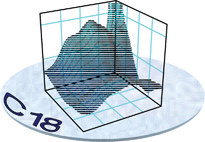Partial least-squares with residual bilinearization for the spectrofluorimetric determination of pesticides. A solution of the problems of inner-filter effects and matrix interferents
Abstract
This paper demonstrates for the first time the power of a chemometric second-order algorithm for predicting, in a simple way and using spectrofluorimetric data, the concentration of analytes in the presence of both the inner-filter effect and unsuspected species. The simultaneous determination of the systemic


 Please wait while we load your content...
Please wait while we load your content...